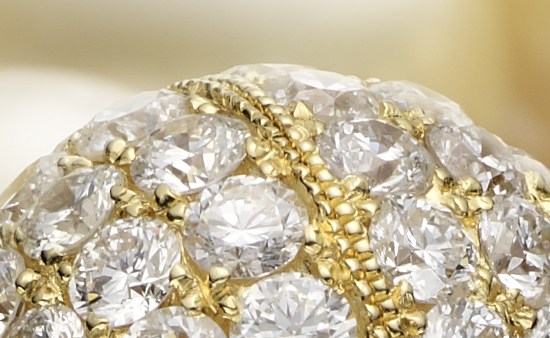
A Guide to the 4Cs of Diamond Grading
The 4C's system was developed by the Gemological Institute of America in the 1940s and 1950s to help explain the complexities of grading a diamond. The 4C's stand for Carat, Color or Colour, Clarity and Cut. The system is still used widely today. At Winterson, we also use the GIA's system to help explain how we grade pearl quality.
CARAT
A carat is the unit used to measure the weight of a diamond, with each metric carat weighing 0.2 grams. Carat weight is not the same type of carat as that used to describe the purity of gold, but takes its name from the carob seeds that were used as a balance on the scales of early gem traders. A carat may also be divided into 100 points, with 15 points representing 0.15 carats.
In jewellery, the greater the weight of a diamond, the greater its rarity and value. One of the largest diamonds ever found was the priceless Cullinan Diamond, weighing 3,105 metric carats.
COLOUR
The most popular diamonds used in fine jewellery are white to near colourless, representing their purity. The 4Cs scale grades these diamonds from D (Exceptional White+) to H (White), with colour and tints of yellow starting to occur at grades from I to Z. Diamond colours need to be examined in controlled lighting conditions, but in general the less colour that a diamond has, the higher its value.
CLARITY
As with other gemstones, a cut diamond may have a number of small internal blemishes or inclusions. These do not necessarily limit the beauty of a diamond and in many cases will not be visible to the naked eye.
- The very best clarity grade on the GIA grading scale is a remarkable flawless diamond graded F1 or 1F.
- Very very slightly inclusions are graded VVS1 and VVS2 and are difficult to see for a skilled grader even under a 10x magnification.
- The next grades of VS1 or VS2 have very slight inclusions, that may be visible under a 10x magnification, but are still used successfully in fine jewellery and can offer excellent value to a discerning buyer.
- The final grades of S1 and S2 and P1, P2 and P3 imperfections have inclusions that are easy to see under magnification or to the eye.
CUT
The final and most important grading factor gives a diamond its dazzling qualities. This grade is also one of the hardest to judge, being dependent on how much light is reflected by the diamond (brilliance), its sparkle when it is moved (scintillation) and how it disperses light into different colours (fire).
The traditional round brilliant cut has 58 facets, with an established geometry of angles and size, but many other shapes can be exquisitely used in a variety of jewellery designs and styles. Whatever the shape, the quality of the cut of a diamond may be graded as Excellent, Very Good, Good, Fair to Poor.
Discover more about why Diamonds (and Pearls) are forever.
Image Credits:
Copyright of Winterson

